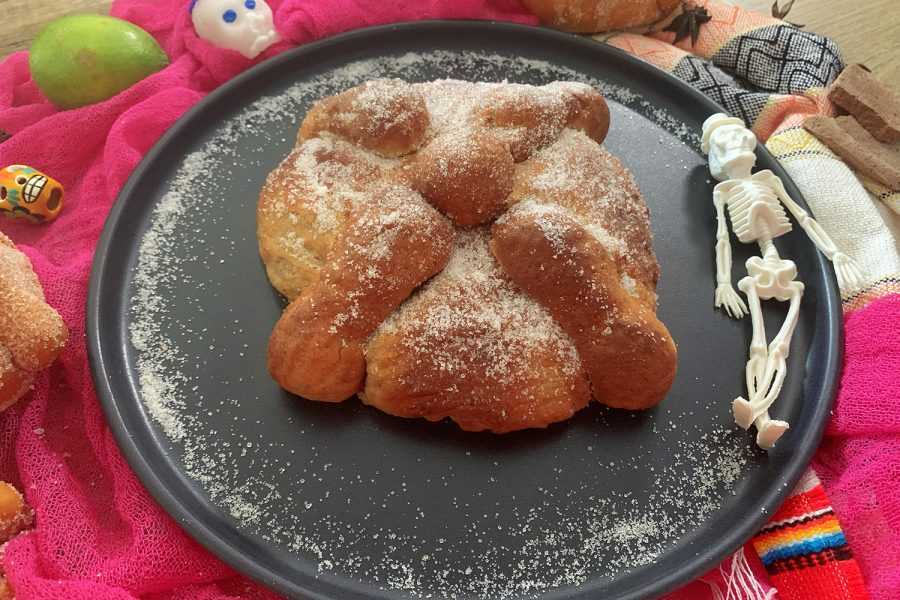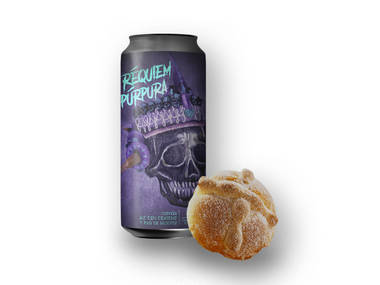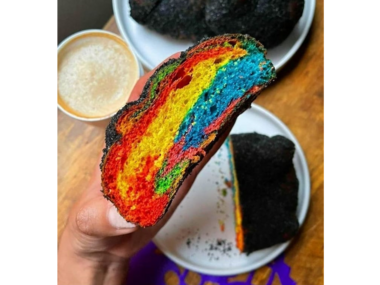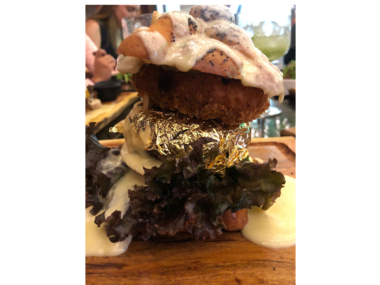Pan de Muerto

“The dead to their coffins, and the living to the celebration” – The Day of the Dead Festival with its unforgettable Pan de Muerto is coming to Mexico City
The Artisanal Festival of Coffee, Chocolate, and more will have a special edition dedicated to Pan de Muerto (Bread of the Dead) and raffles during the event.
“Even the glutton ends up with Pan de Muerto.” The upcoming Day of the Dead will bring a tribute to traditional gastronomy. On September 30th and October 1st, the Artisanal Festival of Coffee, Chocolate, and more… will present its twenty-fourth edition in honor of Pan de Muerto. The event will take place at the Centro de Artes y Música Ciudad de México (CAM) in the Coyoacán borough, and activities will run from 3 to 8 pm. Admission will be free, and the event will be pet-friendly, so your furry friend can accompany you at all times.
In addition to Pan de Muerto, there will be exhibitors of coffee and chocolate, who will offer their innovative creations to accompany each bite. We recommend coming prepared to pay for your purchases inside, so you won’t be surprised when they hand you the bill.
Furthermore, there will be a raffle for three baskets with products from different exhibitors within the event, as well as two coffee makers and two coffee grinders. Meanwhile, the event organizers have announced on their social media that there will be a surprise related to the Day of the Dead.
Do you want to participate?
It’s time to preheat the oven! If you have a bakery and want to share your skills and creativity with the world by preparing the acclaimed Pan de Muerto, the Artisanal Festival of Coffee, Chocolate, and more… will open its doors for you to join as an exhibitor.
There’s never enough Pan de Muerto!
Centro de Artes y Música Ciudad de México
Address: Miguel Ángel de Quevedo 296, Coyoacán.
Metro Station: Miguel Ángel de Quevedo.
Saturday, September 30th, and Sunday, October 1st, 3-8 pm.
Free admission.
If you love this famous baked good as much as we do and are always looking for unique ways to enjoy it, here’are some unusual ways to eat it:
Purple Requiem: Pan de Muerto Beer at Falling Piano

This isn’t a Pan de Muerto bread; it’s a beer made with Pan de Muerto bread. So, the style is called ale with rye and Pan de Muerto. You can have one there or buy it in a can to enjoy at home; they have it both in cans and on tap. Hurry, because they sell out quickly. In fact, the first batch was gone in a day, but they are already preparing more brews, which will be ready in early November.
Coahuila 99, Roma. Metrobús Campeche.
Mon and Tue 2-10 pm, Wed-Sat 2-12 am, Sun 11-10 pm.
Rainbow Bread of the Dead: Rainbow Bagels

Don’t let their appearance deceive you: these breads are made using the traditional recipe and butter from free-range cows. However, here at Rainbow Bagels, they had to make them with rainbow bread, the signature of the place. What they did give a twist to is the traditional sugar coating; this year, they are covered with totomoxtle.
Marsella 56, Juárez. Metrobús Hamburgo.
Tue-Fri 11 am – 9 pm, Sat 10 am – 6 pm.
Burger on Pan de Muerto: Maneiro Prime Bar

We love Bread of the Dead so much that we want to eat it at all times. The option to do just that is with this burger from Maneiro, stuffed with wagyu beef.
Anatole France 145, Polanco. 5588713100. Metro Polanco.
Mon-Wed 1 pm – 11 pm, Thu-Sat 1 pm – 2 am, Sun 1 pm – 9 pm.
Exploring the rich tradition of Pan de Muerto: Mexico’s iconic Bread of the Dead
As the colorful marigold petals pave the way for departed souls and candles flicker in the night, there’s one symbol that stands out during Mexico’s Day of the Dead celebrations: Pan de Muerto, the Bread of the Dead. This iconic bread not only plays a central role in the festivities but also carries centuries of history and culture within its sweet, doughy embrace.
The origins
Pan de Muerto, also known as Bread of the Dead, is a quintessential element of Mexico’s Día de los Muertos (Day of the Dead) celebrations, a holiday that honors deceased loved ones. Its roots trace back to the pre-Hispanic era when indigenous civilizations such as the Aztecs and Maya practiced ancestor veneration. These cultures made offerings of food and other items to appease the spirits of the deceased. Among these offerings was a type of sweet, round bread, which was later adapted and evolved into the Pan de Muerto we know today.
Symbolism and design
Pan de Muerto is not just any bread; it’s a work of art that carries profound symbolism. The round shape symbolizes the cyclical nature of life and death, while the four protruding strips on top represent bones or “ositos,” small sugar skulls that adorn the bread. In the center of the bread, you’ll often find a circular decoration that represents the teardrops shed for the departed.
The sugar coating on top not only adds sweetness but also represents the fragility of life. Some variations feature colored sugar to give it a more vibrant and festive appearance. The bread’s aroma, often infused with orange blossom water, guides the spirits of the deceased to the altar.
Baking Pan de Muerto
The process of making the Bread of the Dead is a labor of love, often involving families coming together to prepare it. The dough is a sweet, slightly dense mixture flavored with anise and orange zest. Bakers skillfully shape it into the iconic round loaf, adding the bone-shaped strips on top. After baking, the bread is often dusted with powdered sugar for a touch of sweetness and a visual resemblance to the dust of the deceased.
Pan de Muerto in modern times
While the essence of this famous baked good remains rooted in tradition, modern bakers have added their creative flair to this age-old recipe. You can now find variations that incorporate chocolate, vanilla, or even fillings like custard or cream. Some bakeries experiment with different shapes and sizes, but the classic round loaf with bone-shaped strips remains the most recognized.
Bread of the Dead is more than a bread; it’s a cultural emblem that transcends generations, connecting the living and the deceased during Mexico’s Day of the Dead celebrations. The process of creating this bread involves skill, tradition, and a deep respect for those who have passed away. As we admire its intricate design and savor its sweet flavor, let us not forget the centuries of history and culture it represents. Pan de Muerto truly embodies the spirit of Día de los Muertos, a celebration that embraces both life and death.
